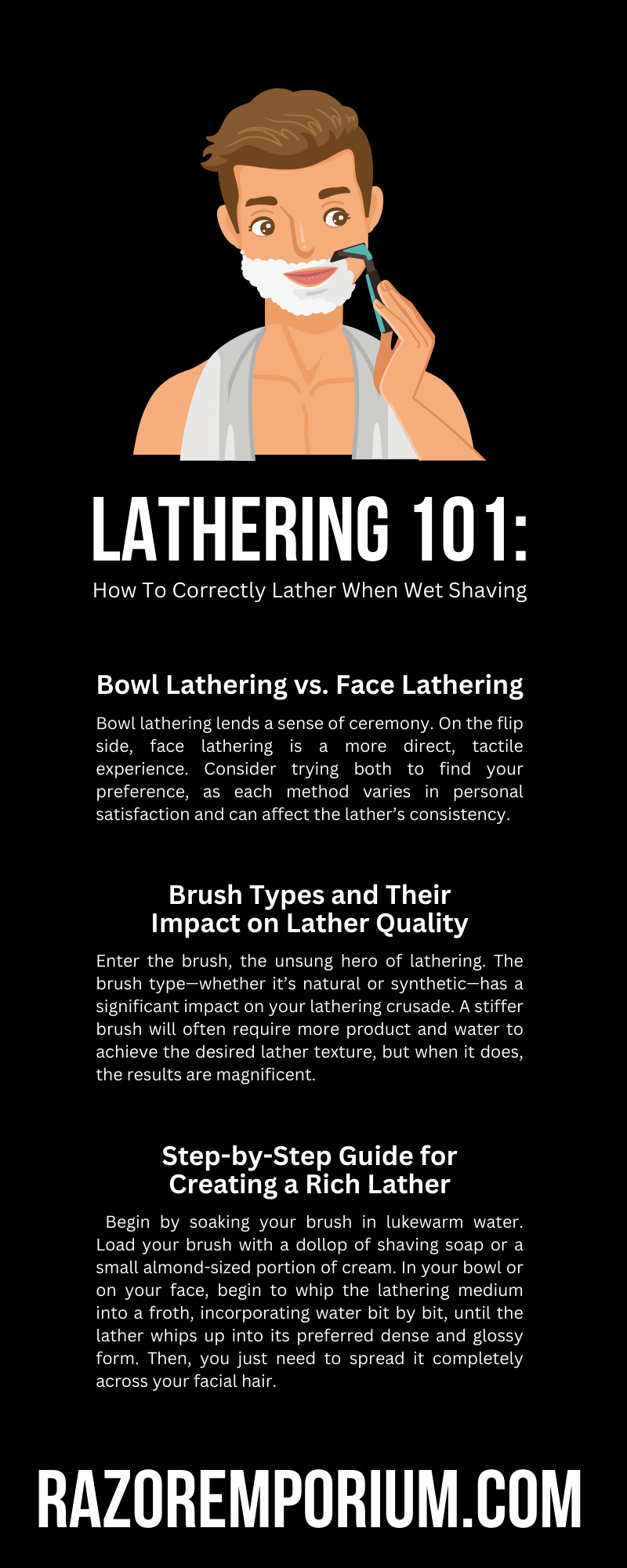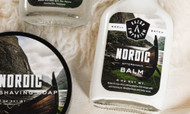Lathering 101: How To Correctly Lather When Wet Shaving
12th Mar 2024
In the storied realm of grooming, there’s a ritual as old as shaving itself—one that speaks to the very essence of the craft. It’s the process of lathering. This meditative art of transforming a humble soap into a whiskered bane’s blessing is the key to achieving a close shave. However, if you’ve never done it before, this act can seem challenging. But fear not; we are here to help.
If you’re a regular grooming enthusiast or just starting out on your wet shaving adventure, this guide is your soapy scroll. It will chart the course through the currents of shaving soaps and creams, wade into the waters of water temperature, and explore the brush bristles. With this guide covering how to correctly lather when wet shaving, your lathering process will be a thing of art and joy.
Understanding Lathering
Before we can get into the details of how to perform this ritual correctly, you need to understand the basics of lathering. From the lathering substance you use to the water you mix it with, there are many parts that go into the creation of your lather.
Types of Shaving Soaps and Creams
Wet shaving boasts an array of lathering mediums, each with its own aficionados and appeal. Shaving soaps are the old faithful, often preferred for their robust lather-building properties and requiring a bit more elbow grease but yielding satisfaction in suds.
Shaving creams, on the other hand, are the debonair cousin, quick to lather and known for their ease of use. Creams are often a choice for those seeking a quicker shave or looking for a formula that’s more conducive to sensitive skin due to their typically richer, more emollient composition.
Importance of Water Temperature
Imagine lathering as a dance between the water and your chosen lathering medium. Water temperature plays a pivotal role in this choreography. If the water is too hot, it might prematurely break down your lather, leaving you with a slippery, dissatisfying concoction. If it’s too cold, the lather can become dense and not apply as smoothly. Lukewarm is your ally; it beckons forth a voluminous and creamy lather that’ll spread with ease.
Techniques for Proper Lathering
To ensure that you lather up your face properly before wet shaving, you need to make sure you employ the correct techniques. We’ll go into further detail on each point in this section.
Bowl Lathering vs. Face Lathering
The decision to lather in a bowl or directly on your face is a personal one. Bowl lathering lends a sense of ceremony. On the flip side, face lathering is a more direct, tactile experience. Consider trying both to find your preference, as each method varies in personal satisfaction and can affect the lather’s consistency.
Brush Types and Their Impact on Lather Quality
Enter the brush, the unsung hero of lathering. The brush type—whether it’s natural or synthetic—has a significant impact on your lathering crusade. A stiffer brush will often require more product and water to achieve the desired lather texture, but when it does, the results are magnificent. Soft bristles are a more forgiving companion, asking for less in return and offering a gentler, more accessible lathering experience.
Step-by-Step Guide for Creating a Rich Lather
To create the perfect lather, you need to create the perfect combination of lather material and water. Begin by soaking your brush in lukewarm water. Load your brush with a dollop of shaving soap or a small almond-sized portion of cream. In your bowl or on your face, begin to whip the lathering medium into a froth, incorporating water bit by bit, until the lather whips up into its preferred dense and glossy form. Then, you just need to spread it completely across your facial hair.
Tips for Beginners
If you have some experience lathering, these techniques should help you perfect your craft. However, if you’re new to the world of wet shaving, you might need some additional tips that’ll help you achieve your desired results.
Common Mistakes To Avoid
Mistakes are common for newbies, but most of them are minor and easy to fix. First off, overloading your brush can lead to a thin, weak lather that won’t protect your skin during the shaving process. This could lead to post-shave irritation or possible nicks on your face.
Another common mistake is not using enough water during the lather creation process. This will leave your lather dry and flaky, akin to parched earth. Remember, lathering is a balance.
Adjusting Lathering Techniques Based on Skin Type
The key to this entire process is that it’s not going to be the exact same for everyone. Listen to your skin and figure out which lather type and combination works best for it. If you’re on the oilier side, a bit more water in your lather can be your skin’s breath of fresh air. For those on the drier end of the spectrum, a creamier, less airy lather might be the balm you seek. Don’t be afraid to tweak and tailor your lathering technique to meet your skin’s unique needs.
Benefits of Proper Lathering
Once you’ve got a handle on the lathering process, you’ll start to see results. But what are they? For those who don’t already know, here are the key benefits of achieving a perfect lather.
Smooth Shaving Experience
Proper lathering sets the stage for a perfect symphony between blade and skin. An inadequate lather can lead to nicks, untrimmed hairs, and a generally uncomfortable shave. When a lather properly hugs the contours of your face, it’ll ensure that you get the type of shaving experience you first envisioned when switching to vintage shaving.
Skin Protection and Hydration
Lathering is also about creating a pact with your skin. A rich lather coats each hair, softening it from root to tip. This reduces the force required to shear the hair, leading to a gentler shave. What’s more, it’s a hydration ritual in disguise, as the lather preps your skin, leaving it supple and guarded against the rigors of the day.







